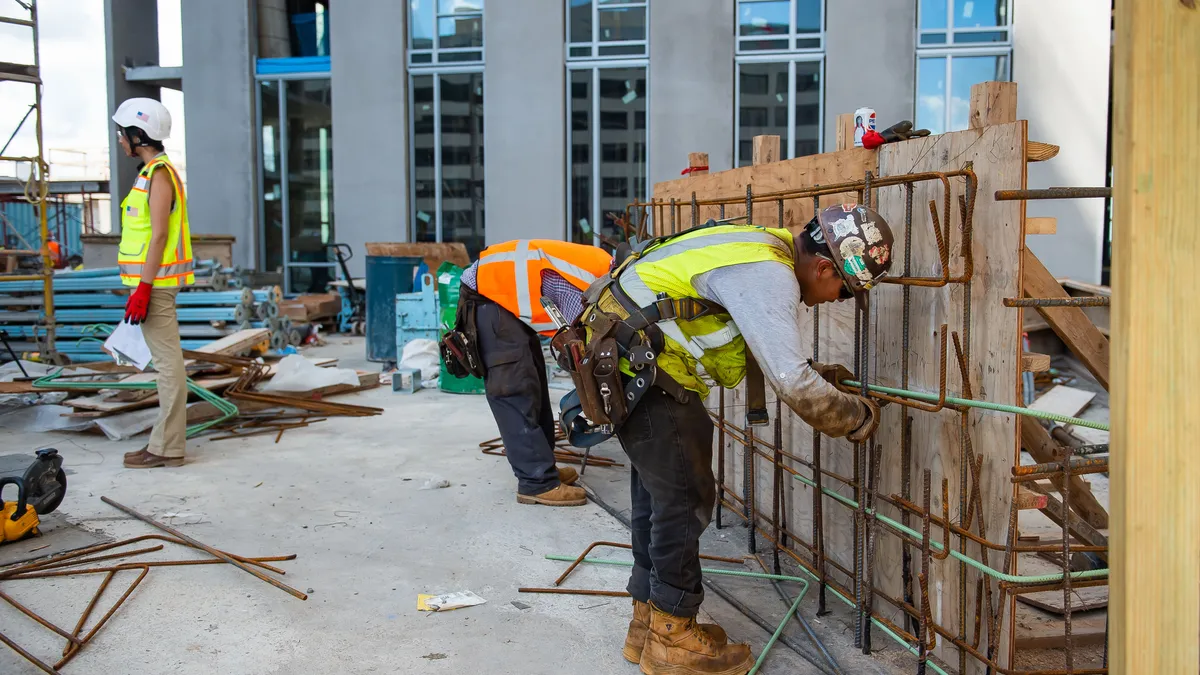Dive Brief:
- Construction backlog remained unchanged in December at 9.2 months, according to Associated Builders and Contractors. The numbers provide a cushion for the sector against a potential recession, but the organization’s economist said reason for caution remains, as higher costs for capital stymied some projects.
- ABC’s Construction Backlog Indicator reached its highest level in November since the second quarter of 2019, as contractors with under $30 million in revenue landed new jobs faster than expected. That high water mark was matched again in December.
- “Contractors enter the new year with plenty of optimism,” said Anirban Basu, ABC chief economist, in the release, but added “contractors may soon show more concern. Anecdotal evidence suggests that financing commercial real estate projects is more difficult.”
Dive Insight:
The strong backlog reading indicates the construction industry continues to fend off any recessionary concerns for this year, Basu said. “Even if the economy were to enter recession this year, contractors would likely be insulated from significant harm.”
That means for now, construction pros are emphasizing the positive.
“Rather than fixate on the possibility of a recession, many contractors remain focused on growth, with expectations for rising sales and staffing levels over the next half year,” said Basu. “Even the reading on profit margins increased this month, perhaps reflecting an improved supply chain.”
But while the report suggests optimism in 2023, contractors’ outlook could soon turn more pessimistic. Financing commercial real estate projects has become more challenging, largely due to recession predictions, said Basu.
“The general increase in the cost of capital has also jeopardized many projects,” said Basu. “Certain contractors [are] noticing an increase in postponements.”
ABC’s reading for profit margins and sales jumped in December, while the reading for staffing levels decreased. While all three readings remain above the threshold of 50, indicating expectations for growth over the next six months, they were significantly lower than year-ago levels.















